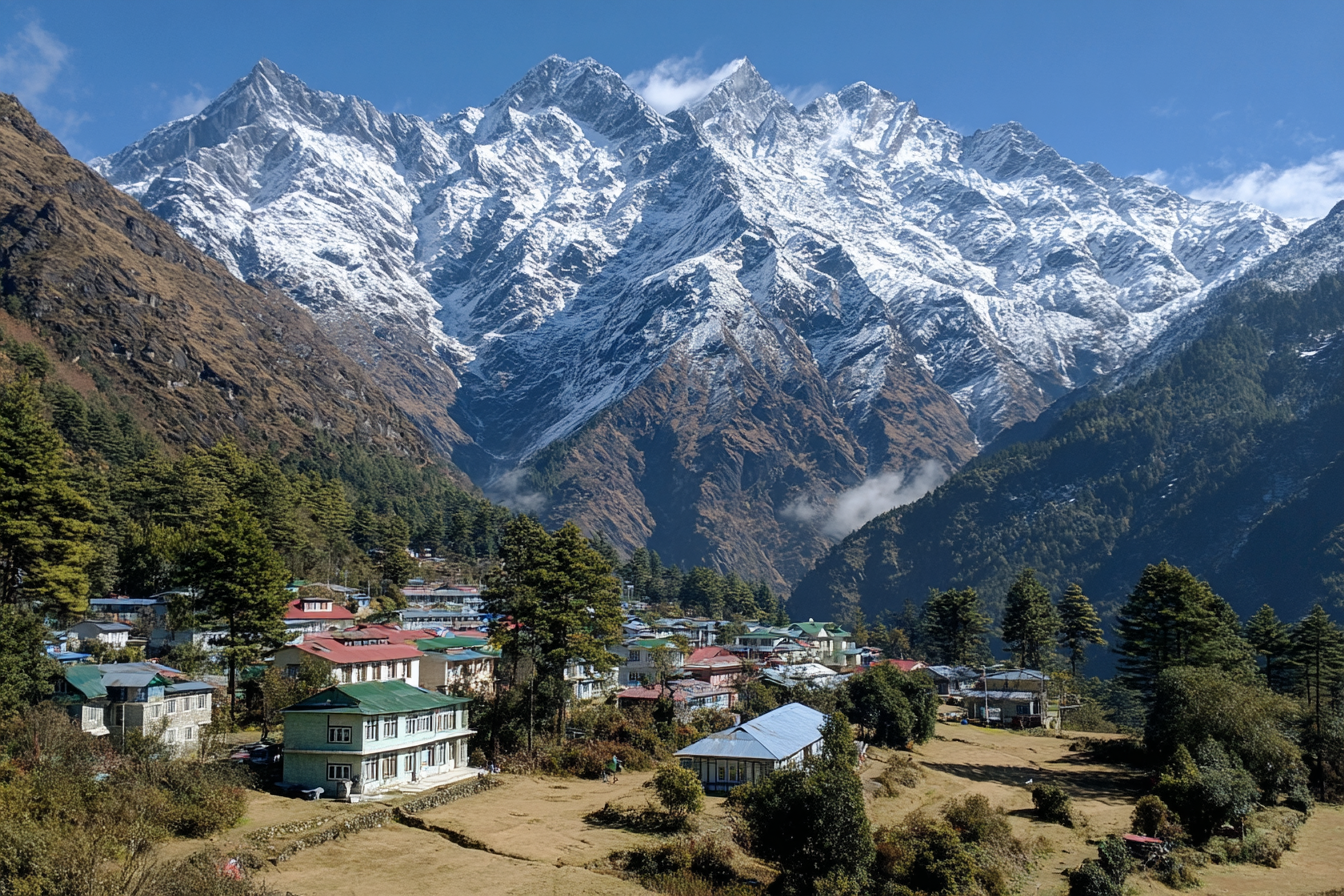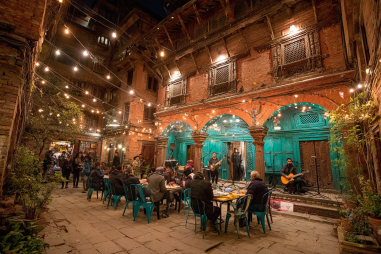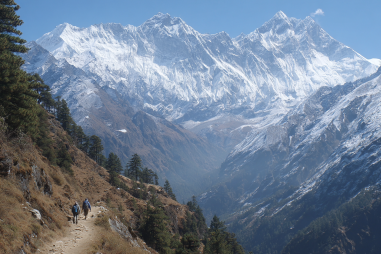Nestled high in the Himalayas, Lukla is more than just the gateway to the Everest region — it’s a destination that offers breathtaking views and a unique trekking experience. However, to truly enjoy Lukla and the adventures that follow, understanding its weather patterns is essential. Lukla’s climate is as dynamic as its landscape, influencing everything from flight schedules to trekking conditions. Whether you’re an experienced trekker or a first-time visitor, knowing when and how to plan your journey around Lukla’s weather can make all the difference.
Overview of Lukla’s Mountainous Climate
Lukla sits at an altitude of approximately 2,860 meters (9,383 feet) in the Solu-Khumbu region of Nepal. Its climate is classified as mountainous, which means the weather can be unpredictable and varies significantly with the seasons. Because of its elevation and geographic location, Lukla experiences a mix of alpine and temperate weather patterns, with cool temperatures most of the year and a pronounced wet season due to monsoons.
The practical implications of this climate are important: the weather directly affects not only your comfort but also the safety and feasibility of flights to and from Lukla, which is famously known for its challenging airport situated on a steep hillside. Understanding these climate characteristics will help travelers make informed decisions on when to embark on their trek or visit.
Seasonal Weather Breakdown
Spring (March to May)
Spring is one of the most popular times to visit Lukla because it offers a perfect balance of mild weather and natural beauty. Daytime temperatures range from 10°C to 20°C (50°F to 68°F), while nights can be chilly but generally manageable. The rhododendrons bloom in the surrounding forests, adding vibrant splashes of color along trekking routes.
Visibility tends to be excellent, with clear skies that provide spectacular views of the Himalayan peaks. This season marks the thawing period after winter, so trails are usually accessible, and the probability of rain is relatively low.
Summer (June to mid-July)
Summer in Lukla marks the beginning of the monsoon season, and travelers can expect increased rainfall and cloud cover. Temperatures remain moderate, typically between 15°C and 25°C (59°F to 77°F), but the dampness can make trekking trails slippery and more challenging.
The heavy rains lead to muddy paths and the possibility of landslides, which can disrupt trekking routes and road access. While the monsoon transforms the landscape into a lush green paradise, it also reduces visibility of the mountain vistas — often obscured by clouds.
Monsoon (Mid-July to August)
The peak monsoon season brings frequent and sometimes heavy showers, with high humidity levels. This can make trekking uncomfortable and risky due to slippery trails and potential flash floods. Flights to and from Lukla are often delayed or canceled during this time, causing disruptions to travel plans.
That said, monsoon does have its own charm for the adventurous: fewer tourists, serene forests, and the chance to witness nature at its most vibrant. Still, if you choose to visit during this period, be prepared for weather-related challenges and plan for extra travel time.
Autumn (September to November)
Autumn is widely considered the best season to visit Lukla, especially for trekking. Post-monsoon, the sky clears, leaving stunning, unobstructed views of the Himalayas, including Everest and its neighboring peaks.
Temperatures during the day hover between 15°C and 20°C (59°F to 68°F), cooling off significantly at night, especially mid to late autumn. This season experiences stable weather with minimal rain, and the air quality is excellent, providing ideal conditions for photographers and nature lovers alike.
Winter (December to February)
Winter brings cold temperatures to Lukla, with daytime highs ranging from 5°C to 10°C (41°F to 50°F) and nighttime temperatures often dropping below freezing. Snowfall is common, which can blanket the region in a stunning white layer but also makes trekking more difficult due to icy trails and potential route closures.
The air tends to be dry, and the skies are generally clear, making for dazzling views, but remember to dress warmly and be prepared for colder conditions if planning a winter visit.
Best Time Frames for Trekking and Visiting Lukla
Choosing the right time to visit Lukla depends on your priorities: whether you want to avoid crowds, seek the best weather for trekking, or experience a particular seasonal beauty.
- March to May (Spring): Ideal for those who want pleasant weather, blooming flora, and good trekking conditions.
- September to November (Autumn): The most popular trekking season, offering clear views, stable weather, and moderate temperatures.
- December to February (Winter): Suitable for travelers prepared for colder weather and less crowded trails, although some routes may be snowbound.
- June to August (Monsoon): Generally not recommended for trekking due to heavy rain and increased risk, but can be rewarding for adventurers seeking solitude and lush scenery.
Weather Impact on Flights and Trekking Conditions
One of the critical factors influenced by Lukla’s weather is flight operations. The Tenzing-Hillary Airport in Lukla is known for its short and challenging runway, located on a hill with a steep drop on one side. This makes flights very sensitive to weather conditions.
Fog, heavy rain, strong winds, and low visibility can cause flight delays or cancellations, sometimes for multiple days at a time. Many trekkers plan buffer days in Kathmandu or Lukla to accommodate potential flight disruptions during the peak seasons, especially in the spring and autumn.
On the trail, rain from the monsoon season can cause slippery and dangerous paths, while snow and ice in winter create additional challenges, requiring snow gear and caution. Spring and autumn see the most reliable trekking conditions, with firm trails and fewer hazards.
What to Pack Based on Seasons
Packing appropriately for Lukla depends heavily on the time of year you plan to visit:
- Spring and Autumn: Layers are key — lightweight shirts and thermal layers for mornings and evenings. A waterproof jacket is essential as sudden showers may occur. Good trekking boots, gloves, a hat, and sunglasses complete the gear.
- Summer and Monsoon: Waterproof clothing including a sturdy poncho, waterproof backpack cover, quick-dry clothing, and gaiters to protect against mud and rain. Breathable and moisture-wicking fabrics are recommended.
- Winter: Warm insulated jackets, thermal base layers, gloves, woolen hats, and sturdy boots with good grip are a must. Down jackets and sleeping bags rated for cold temperatures will help in lodges or tents.
Tips for Handling Weather-Related Challenges
Traveling to Lukla requires careful preparation to manage its unpredictable weather successfully. Here are some tips to keep your trip smooth and enjoyable:
- Always check local weather forecasts before departure and daily while on the trek.
- Allow extra days in your itinerary for possible flight delays in or out of Lukla.
- Stay hydrated and consume adequate calories to maintain energy levels despite cold or wet conditions.
- Be prepared to adjust your trek plans based on weather conditions — safety should always be the priority.
- Carry spare batteries and power banks, as cold weather drains battery life faster.
- Use trekking poles for added stability on slippery or uneven terrain.
- Choose layered clothing so you can easily adapt to changing temperatures throughout the day.
Making the Most of Your Lukla Adventure
By understanding Lukla’s weather patterns and planning your visit around favorable conditions, you can greatly enhance your trekking experience. Whether exploring during the vibrant spring blossoms or the crystal-clear autumn days, Lukla offers a stunning backdrop for adventure enthusiasts and nature lovers alike.
Proper preparation, flexible plans, and respect for the mountain environment will help you navigate Lukla’s climate challenges. This knowledge not only ensures your safety but also allows you to focus on the incredible sights and cultural experiences that make Lukla a unique and unforgettable destination in the heart of the Himalayas.







